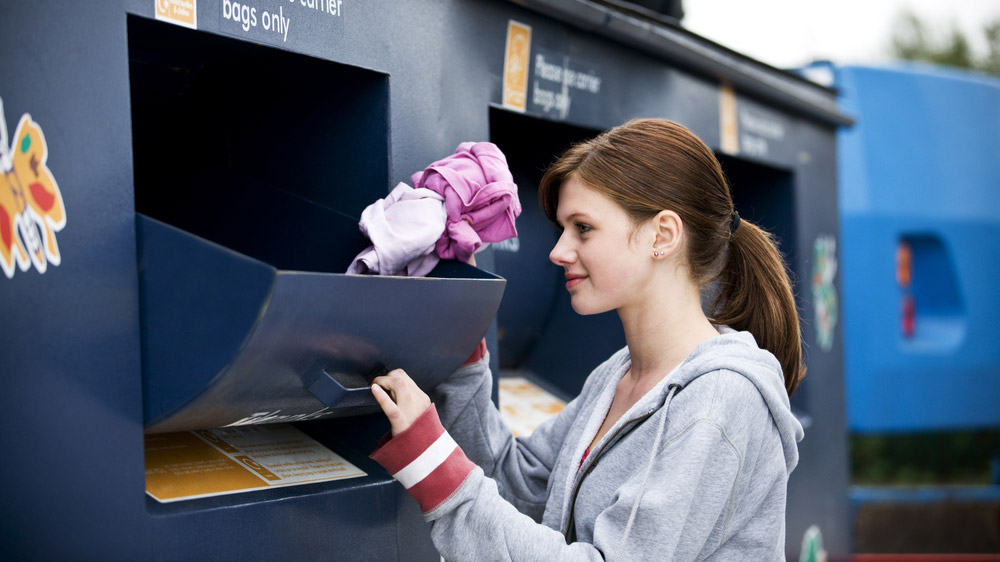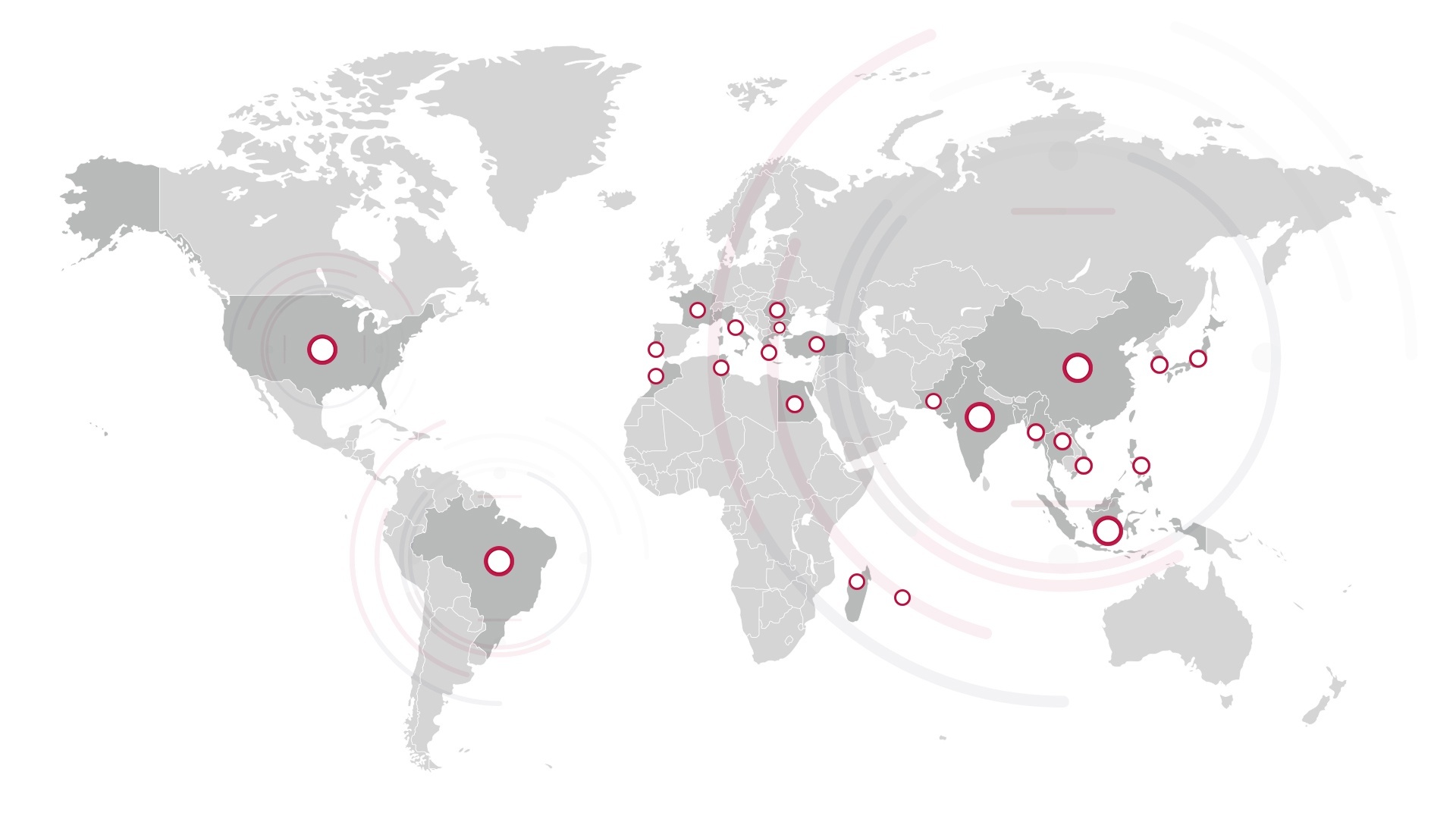The textile and fashion industry is experiencing a radical transformation. The global demographic growth, digitalisation, scarcity of resources, and accelerating climate change challenge the current business models to become more innovative and sustainable in order to remain profitable.
August 1 has marked the 2018 Earth Overshoot Day when the humanity has consumed the entire year’s worth of the planet’s natural resources. From now on we will be exploiting the earth’s savings borrowed from the next year, depleting an equivalent of 1.7 annual earth’s capacity to replenish the natural resources and sequester carbon. On a global average, one person buys 5kg of clothes per year, with up to 16kg bought in Europe and the USA. The clothing and textile industry annually emits a total of 1.7 billion tonnes of CO2, a significant factor triggering global climate change. This is largely due to the fact that 63% percent of textile fibres are derived from petrochemicals, while other 37% is dominated by cotton (24%) that demands extensive amounts of water and intensive use of pesticides. Textile production requires nearly 79 billion cubic meters of water for growing raw materials and wet processing, causing large-scale pollution with toxic chemicals that severely damage the water basins, biodiversity, and soil. The industry generates 2.1 billion tonnes of waste in the form of disposed clothing and off-cuts each year, yet only 20% of it is collected for reuse or recycling.
Industry forecasts
The total apparel consumption is expected to grow further from 62 million tonnes in 2015 to 102 million tonnes in 2030, increasing the environmental stress, risks, and financial concerns. With the current solid waste rates from production and end-of-use, the industry will generate additional 57 million tons of waste annually, reaching 148 million tons by 2030. A study by the Boston Consulting Group suggests that if the industry players continue with business as usual, brands’ profit margins can decrease due to rising costs for raw materials, energy, and labour. The expected loss is projected to reach at least 3 percentage points by 2030 equivalent to €45 billion per year of total lost profits.
Sustainable business model
The traditional business model adopted by the major international fashion retailers is based on fast fashion that implies mass production, variety, agility, and affordability. Contrary to fast fashion, a new trend for sustainable fashion is now gaining popularity. It promotes environmentally conscious business practices with an emphasis on quality over quantity encouraging consumers to buy less often, but high-quality items so that the garment is seen as a smart investment. Sustainable fashion encompasses sustainable production, fair wages, extension of clothing lifespan through reuse, and recycling of the materials.
To stay competitive, profitable, and successful, companies will need to improve drastically their resource efficiency and reduce environmental impacts by implementing sustainable business strategies. The entire value chain must be carefully upgraded to keep materials and products in the loop while maintaining the highest possible value. This can be achieved through a multi-stakeholder cross-functional collaboration where fashion business shows proactive leadership and commitment to improving their sustainability performance in coordination with the government, public organisations, industry associations, and independent recycling verification companies.
Market for sustainable clothing
Sustainable brands selling organic and recycled products are revolutionising the fashion market. Consumers worldwide display increasing interest in the environment-friendly products, and more and more people are eager to support clothing reuse and recycling. Companies pioneering sustainable business practices gain a strong competitive advantage by differentiating their products through eco-fashions. China is currently experiencing a significant shift in personal consumption behaviour towards textiles with less environmental impacts. Purchasing and wearing environmentally friendly garments reportedly helps the Chinese customers gain social approval and make a good impression on other people.
An in-depth analysis of consumer attitudes and behaviour recently published by the Journal of Fashion Marketing and Management concludes that the modern market for sustainable clothing is not just limited to people who are concerned about the environment. The study shows that most of the customers who do not usually buy second-hand clothes or prioritise eco-friendly products in their purchase criteria are willing to buy recycled clothing if the price, quality, style, and comfort are equal to new garments made from virgin raw materials.
Additional value of recycling
The European Commission reports that around 5.8 million tonnes of textiles are discarded in the EU every year, and only 26% gets recycled. Annual textiles waste in the UK amounts to 350,000 tonnes and 9.5 million tonnes for the US. Hong Kong discards about 100,000 tonnes, while China sends 20 million tonnes to landfills annually. Converting textile waste into raw materials through reuse and recycling techniques provides an outstanding opportunity for additional value creation. This requires implementing comprehensive collection and reuse schemes, as well as investing in developing advanced recycling technology.
Systematic waste reduction along a linear value chain can contribute around €4 billion per year in 2030. Implementing a circular business model of production and consumption would give far greater results. Global Fashion Agenda estimates that there is a potential €160 billion-per-year upside for the industrial economy that can be achieved through the responsible use of scarce resources and sustainable supply chain management. This equals to 90% of the current profit pool of the global apparel and footwear sector or 11% of the current retail value.
Closed-loop recycling
The industry should aim to close the loop between the end-of-use phase and the raw materials phase, recycling apparel into new input materials. Extending the active lifetimes of textile products through reuse is crucial to reducing the environmental impacts of textile products and must be prioritised as such. When the textiles become too worn out to wear, the materials must be recycled back into new textile products. This type of circular model can drastically reduce the environmental footprint of the textile industry.
Offering end-of-use in-store garment collection scheme is an effective way for brands and retailers to minimise waste levels. The current global 20% collection rate could be tripled to 60% by 2030 saving the industry more than €4 billion in value even with the same allocation to end-of-use processing as today. Far greater additional value could be obtained by establishing reverse supply chains and contracting logistics and processing providers for sorting and processing apparel, recycling products back to the value chain as raw material, e.g. sending them back to the suppliers’ factories.
Reusing clothes
A creative sub-industry is emerging around clothing sharing and rental aimed at extending the active lifetime use of garments. Yerdle Recommerce, a California Benefit Corporation operating since 2012, specialises in logistics and technology that facilitate brands such as Levi’s, Patagonia, and Eileen Fisher to buy back and resell their second-hand items.
Filippa K, operating a profitable second-hand store in Stockholm since 2008, has innovated its business model by renting out clothes through its lease concept. Worn Again is another start-up that aims to provide alternatives to using virgin polyester. Its business model is built on collaboration with large fashion brands offering chemical-recycling technology to address major barriers to textile-to-textile recycling. This technology allows effective separation of blended fibres, dyes, and other contaminants from polyester and cellulose. Other start-ups that offer sharing of clothes through clothes swaps or renting include Walk-in Closet, Kleihd in Zurich, Rent the Runway, Sharewear, and Rentez-Vous.
The drawback for these online rental business models is the need for additional transportation and for garments to be washed between rentals. For the moment, this concept has not been profitably implemented at scale, yet there is a big potential for further growth. The global used-textile market was estimated at €4 billion in 2015. The reuse market can develop as a bigger part of the fashion industry’s value chain if the fashion brands and consumers will prioritise it to improve sustainability. A recent UK survey found that more than half of respondents had bought used clothes in the previous year, and another fourth would buy more if the choices improved. Two-thirds expressed interest in participating in retailer buy-backs. Similar research in other EU countries showed that only 10% of respondents considered buying second-hand in their recent purchases.
End of life applications
At the end of the life cycle, fashion products can be put to a different use without modification, up-cycled, down-cycled, fully recycled or disposed of as waste to landfills. The main idea of sustainable management is preventing products from ending up as pure waste.
Recycling the fibres could mitigate much of the environmental impact of raw materials, but the technology needs to be further improved, as it can currently cause up to 75% loss of value in just the first cycle. Chemical recycling produces fibres of a quality comparable to virgin materials, but it requires adding chemical by-products and applies only for polyesters and nylons at present. Mechanical recycling works for natural materials, but the shredding usually leaves the individual fibres much shorter, reducing the quality of the material and creating a lower-value product. Mixed fibres, for example, the addition of elastane, cannot be recycled with current technologies.
The environmental impacts of textile recycling
The industry experts agree that, in general, textile reuse and recycling are environmentally advantageous compared to incineration or landfilling, but not all recycled fibres have lower environmental impacts compared to all types of virgin fibres. A life cycle perspective is required to assess the material environmental sustainability considering all relevant impact categories including collection and sorting processes. Various allocation methods for managing open-loop recycling can strongly influence whether a recycled fibre is more sustainable compared to a virgin fibre.
Recycling verification
To ensure transparency and full compliance the supply chain footprint must be measurable, traceable, and validated by independent third parties with expertise in recycling verification.
SgT is a textile specialist with expertise in:
- Supply chain traceability
- Recycled product footprint assessment
- Validation of recycled products
- Verification of processes throughout a recycled product’s entire life cycle.
Our experienced consultants can help you implement innovative sustainable textile solutions and verify the authenticity of your recycled content.
Contact us today to discuss your business situation with a free consultation from one of our sustainability experts.
Want to learn more about how SgT can assist you to
become to more sustainable?
{{cta(’68ddc48f-35db-4fa6-98d7-c9a99988317f’)}}
{{cta(‘df2514bd-21b2-4dd1-a2bb-65d0f0235488′,’justifycenter’)}}



